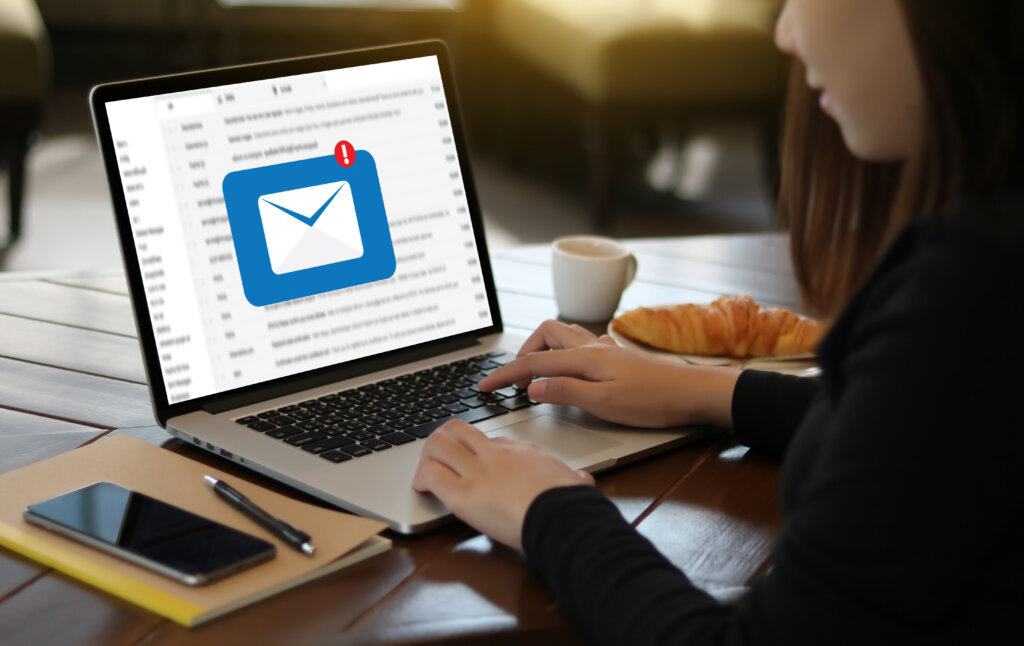Welcome emails are a great way to stay connected with your customers and build relationships. They allow you to thank them for signing up, introduce yourself, and invite them to learn more about your offer.
By crafting the perfect welcome email, you can ensure your new subscribers feel valued and excited about being part of your community.
With these tips, you can create compelling emails to make a lasting impression on your users.
Why Sending Welcome Emails Is Important
First impressions are everything, and that’s why welcome emails matter.
They provide a perfect opportunity to introduce yourself, showcase your brand’s personality, and give your customers an idea of what to expect when working with you. Think of your welcome email as your online handshake but with more personality and flair.
These emails also help to build trust and keep your users informed. By providing helpful
information about their account, product features, and how to get started with your services, you can ensure that they have a positive experience.
Welcome emails are also an ideal way to establish customer communication patterns. By responding quickly and providing helpful information, you set the tone for future interactions.
Finally, welcome emails are important because they help to increase customer engagement and loyalty.
By including discounts, special offers, or exclusive content in your emails, you can encourage them to interact more with your business. This increases the chances that they will become loyal, long-term customers and continue to purchase from you.
Writing Engaging Welcome Emails
A few essential components should be considered while writing compelling welcome emails.
First, ensure your email design is visually attractive and easily comprehended. Utilize concise copy that can be easily understood; apply fonts, colors, and images that go hand in hand with the feel of your brand. This will encourage readers to stay engaged throughout the content and take the actionable steps you recommend.
Next, be sure to customize your welcome email.
Making your readers feel welcomed and valued is just a few personalized touches away. Whether using their name, highlighting an item they have previously shown interest in, or providing them with content catered to their past experiences with your business, personalizing your welcome emails will go a long way toward creating an enjoyable experience for everyone.
Third, make sure to keep your welcome emails action-oriented.
Instead of simply saying “Welcome!” or “Thank you for joining us!” let readers know exactly what actions you’d like them to take to maximize their experience with your brand.
For instance, if introducing a new product or feature, ask readers to check it out and provide feedback. Or, if they just signed up for an account, invite them to explore all of the features you offer. Whatever it may be, give readers clear and concise directions to get the most out of your welcome emails.
Finally, make your welcome email mobile-friendly!
With most emails being opened and read on mobile devices, ensuring that your welcome emails look great no matter what device or screen size they’re viewed on is important.
Ensuring that your email is optimized for mobile, you can rest assured knowing that readers will be able to fully appreciate your message and take action on your suggested next steps.
By following these tips, you can ensure that your welcome emails are visually appealing and action-oriented—allowing you to create a strong connection with new customers and help them quickly find their way to success with your brand.
Tips for Designing Professional-Looking Emails
When it comes to designing professional-looking emails, there are a few key elements that you should keep in mind.
1. Use an email template that aligns with your brand’s aesthetic. Selecting the right fonts and colors will help create consistency across your communications.
2. Stick to one or two font styles and sizes. Emails with too many fonts can be overwhelming for readers.
3. Include a clear call to action in your emails. Make it easy for your audience to quickly see what action they should take and how to do it.
4. Keep the text concise while still getting your message across. Long emails can be difficult to read, so ensure your content is scannable with plenty of white space.
5. Use images and videos sparingly. Too many visuals in an email can slow the loading time and cause readers to lose interest.
How Automation Improves The Process
Automated email campaigns are a great way to ensure you consistently provide your subscribers with engaging content. Automating emails can save time and effort, ensuring the right message gets sent at the right time.
You can also use automation to personalize your emails based on customer behavior. For instance, if someone recently purchased an item from your store, you can email them related products to purchase. This helps build relationships with customers and increases sales.
Automation also helps make sure emails are error-free. Using automated software, you can set rules for how each message should look before it reaches the customer’s inbox. This ensures emails are sent correctly and quickly without typos or other mistakes.
In addition, automating your email campaigns allows you to track results in real time.
You can analyze data from each campaign to see who opened the email, who clicked on links, and how much revenue was generated. This helps you better understand what’s working and not, so you can refine your campaigns accordingly.
Overall, automation improves email marketing by helping streamline time-consuming tasks, allowing for more personalized messages, ensuring error-free emails, and providing in-depth data on campaign results. With the right automated tools and strategy, you can optimize your email campaigns and drive more revenue for your business.
Monitoring the Results
After you create and launch your email campaigns, monitoring the results is important. This will help you understand which emails are performing well and which need improvement.
Look at metrics such as open rate, click-through rate, unsubscribe rate, and bounce rate to get an idea of how people react to your emails. You can also use A/B testing to determine which subject lines, email designs, and calls-to-action work best for you.
A/B Testing is a form of experimentation where you create two versions of an email and send them to two different groups. You can determine which version works better for your audience by comparing the performance metrics.
Finally, don’t forget to measure your return on investment (ROI). Check how much revenue you generate from each campaign and use that information to make future decisions. With this data, you can refine your email campaigns to create more successful campaigns in the future.
By tracking these metrics, you can make tweaks or adjustments as necessary to increase the effectiveness of your email campaigns. This will help you maximize the ROI of your email marketing and ensure that you’re getting the most out of each campaign.
Final Thoughts
Email marketing can be an incredibly powerful tool for businesses. However, following the best practices outlined above is important to ensure your messages are successful and engaging.
Ensure you stay up-to-date on industry trends, create content that resonates with your audience, design emails correctly, and use automation when possible. Also, don’t forget to track the results of your campaigns and use A/B testing to refine future emails.
By following these tips and best practices, you can create successful email campaigns that drive revenue for your business. Good luck!
About The Author
Khalid Essam
Khalid is the Chief of Staff at AOK. He collaborates with a team of specialists to develop and implement successful digital campaigns, ensuring strategic alignment and optimal results. With strong leadership skills and a passion for innovation, Khalid drives AOK’s success by staying ahead of industry trends and fostering strong client and team relationships.






